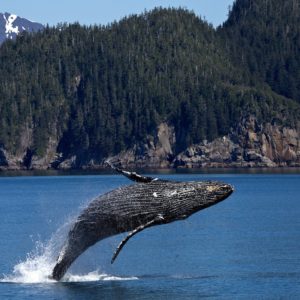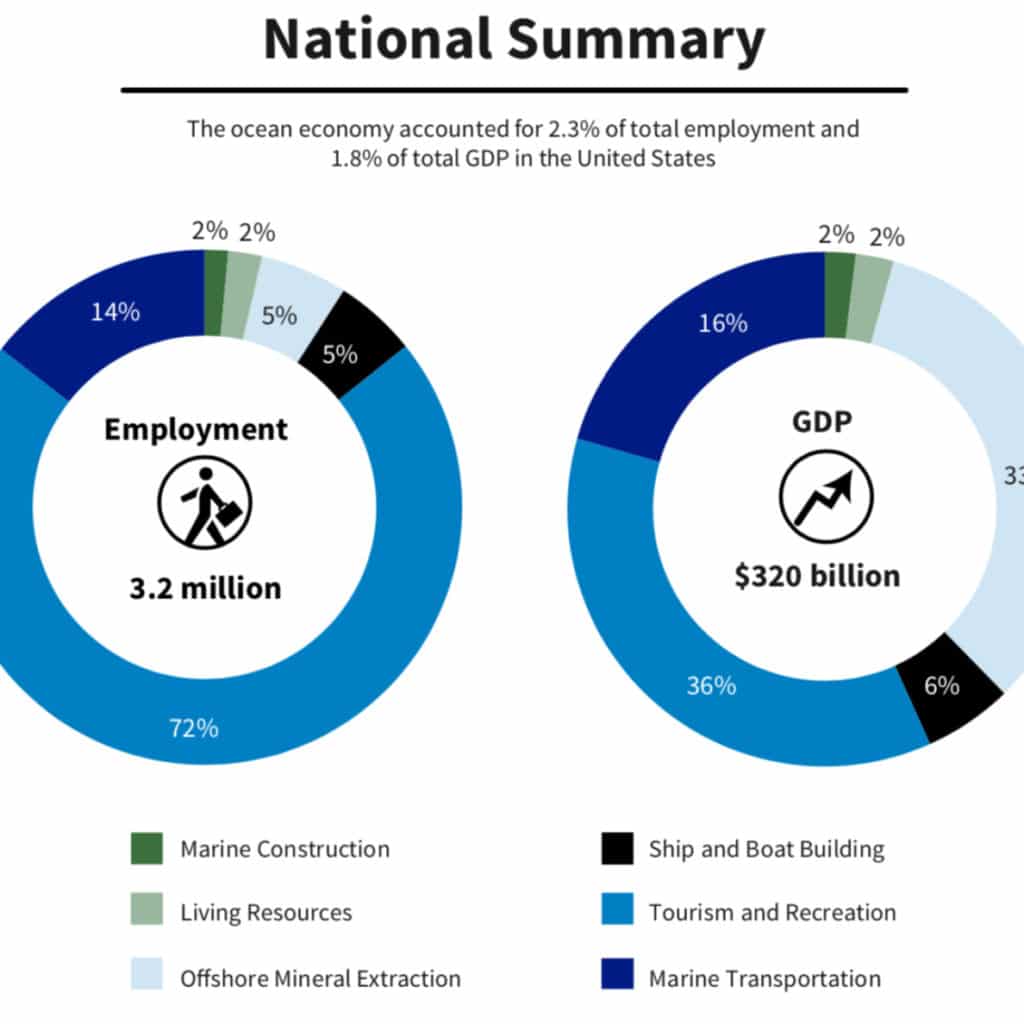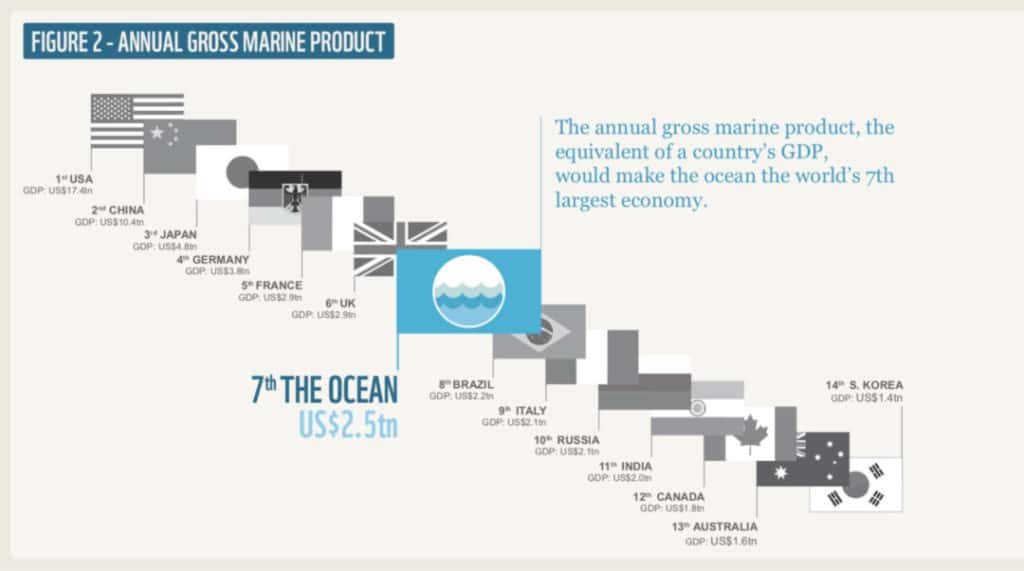Content
Why do I continue to use the expression Blue Economy?
My first contact with the Blue Economy
In 2004, during my time as German Ambassador to Chile, I visited the southern part of the country and was bewildered by the natural beauty of the Lago Llanquihue, where it’s crystal clear waters reflected the volcano Osorno like a mirror. Hiking in the romantic wilderness of Patagonia, presented a first experience in observing breeding cages for salmon. Further observation at an aquaculture company, shows that the salmon lives in fresh water in their first six months before being moved to the ocean for their final growing period. The aquaculture industry in Chile has become one of the most important economic sectors in the country contributing 10% to the country’s GDP.
From this personal account, I saw the interplay between the many interests of the people in the region – all bounded somehow in the same way to the ocean: local fishermen taking advantage of the rich waters in the lakes and ocean; the gigantic aquaculture companies using the same freshwater lakes and the gorgeous spots around the island Chiloe, the tourism community responding to an ever-growing sector and trying to build up eco-friendly resorts and hikes at the shores and the rights of the Chilean state to benefit from this national asset. Finding a way to balance these – sometimes conflicting – interests, in a manner that allows both, sustainable and equitable growth, is what we today call the Blue Economy.


Blue Economy - a new concept?
At the time of my visit in 2004, there wasn’t a concept, a paradigm or a common understanding of the Blue Economy.
UN Conference on Environment and Development

Rio+20 conference
Twenty years later, at the Rio+20 conference in 2012, the Green Economy became the main theme. UN defines the Green Economy as a low-carbon, resource-efficient, and socially inclusive economy. Growth is driven by public and private investment and the reduction of carbon emissions and pollution. The Green Economy was expected to create jobs, promote business and investment, while increasing the production of clean energy, reducing waste and conserving natural resources.
One of the main outcomes of the Rio+20 conference was the development of the Sustainable Development Goals (SDGs). The SDGs are based on the Millennium Development Goals (MDGs). The aim was addressing all three dimensions of sustainable development (economic, social and environmental) in a balanced way.
The concept or new paradigm of the Blue Economy emerged in the context of the Rio+20 Conference on Sustainable Development and the Green Economy. At that time it could be seen as a branch of the Green Economy.
Sustainable Development Goals

The Blue Economy comprises the same principles and goals as the Green Economy. However, the concept has evolved from a “blue aspect of a green economy” to a paradigm in its own right. Oceans and lakes are seen as “development areas” that should be given an opportunity for sustainable development. The aim is sustainable management of marine resources that enables existing and new areas for economic growth and job creation without destroying the ocean habitat.
Blue and Green Economy are mutually supportive
From this perspective, Blue and Green Economy are mutually supportive. Greater prosperity and social justice while significantly reducing environmental risks. In this sense, the concept of the Blue Economy opens up new perspectives and new possibilities for the sustainable use of the oceans. For centuries, the seas and lakes have been seen as an unlimited resource and as a global waste-bin. Environmental costs have been consistently excluded from any economic calculation.
The new Blue Economy approach aims to decouple general socio-economic development from environmental degradation. The real value of the oceans and seas must become clear in order to enable sustainable use and protection of the ecosystem.
Challenges for the Blue Economy
The current worrying state of marine and coastal ecosystems shows that further efforts are needed for sustainable management. The main challenges for achieving a truly sustainable Blue Economy are:
- Sustainable use of biodiversity in the production of food from oceans, seas, and lakes;
- Improving food security through sustainable fisheries and aquaculture;
- To fight decisively against climate change and CO2 emissions;
- Measures to combat ocean acidification associated with damage to coastal habitats such as mangroves, seagrass or salt marshes;
- Sustainable marine and coastal tourism, which, precisely because of the enormous growth in recent years, is linked to the increase in greenhouse gas emissions, water demand, wastewater, garbage, loss of coastal habitats and threats to biodiversity.
- Prevention of pollution and marine waste: the growing population, the intensification of agriculture and the increasing urbanization of coastal areas are, in addition to shipping, the sources of increasing marine pollution, mainly plastic pollution.
The Blue Economy by the numbers
The organizer of the Sustainable Blue Economy Conference in Nairobi made references to some figures to explain the underlining factors for the importance of the Blue Economy.
“The United Nations Environment Programme (UNEP) estimates that half the world’s population lives within 60 kilometers of the sea. Three quarters of all large cities are located along the coast. According to the International Maritime Organization (IMO), the sea facilitates global trade by: up to 70% by value up to 90% by volume. The Food and Agriculture Organization (FAO) estimates that Blue Economy industries assure the livelihoods up to 820 million people worldwide.” Our oceans contains 1.3 billion cubic kilometres of water, which is 97% of the world’s water. The World Bank estimates that oceans absorb about 25% of the extra carbon dioxide added to the atmosphere by burning fossil fuels. Oil and gas remain major sources of world energy with roughly 30% of production being offshore. The International Energy Agency (IEA) estimates that renewable energy could meet 100% to 400% of current global energy demand.” (Conference Paper 2018)
If we have a closer look at the share of the Blue Economy in general economic development, it seems that the huge potential of the oceans isn’t fully discovered.
Blue Economy in the European Union
In 2016 the Blue Economy contributed 1.3 % of the GDP of the 28 member states of the European Union and just over 1.6 % of its employment.
Blue Economy in the US
In the United States of America, the figures are more or less the same than in the EU. There is a slight difference in the definition of what is part of the Blue Economy or Ocean Economy, as the NOAA is calling it. The ocean economy accounted for 2.3% of total employment and 1.8% of total GDP in the United States.
Blue Economy is the world’s 7th largest economy
These figures are not looking impressive at first sight. However, the ocean provides wide-ranging value, from food and tourism, trade and transport and other areas. With an annual gross marine product of 2.5 tn USD (the equivalent of a country’s GDP), it would make the Blue Economy the world’s 7th largest economy.




